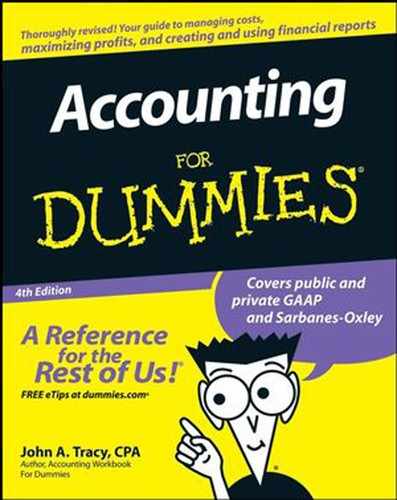Chapter 13. How Lenders and Investors Read a Financial Report
In This Chapter
Looking after your investments
Using ratios to interpret profit performance
Using ratios to interpret financial condition
Scanning footnotes and sorting out important ones
Paying attention to what the auditor says
Some years ago, a private business needed additional capital to continue its growth. Its stockholders could not come up with all the additional capital the business needed. So they decided to solicit several people to invest money in the company, including me. (In Chapter 8, I explain corporations and the stock shares they issue when owners invest capital in the business.) I studied the business's most recent financial report. I had an advantage that you'll have too if you read this chapter: I know how to read a financial report and what to look for.
After studying the financial report, I concluded that the profit prospects of this business looked promising and that I probably would receive reasonable cash dividends on my investment. I also thought the business might be bought out by a bigger business someday, and I would make a capital gain. That proved to be correct: The business was bought out a few years later, and I doubled my money (plus I earned dividends along the way).
Not all investment stories have a happy ending, of course. As you know, stock share market prices go up and down. A business may go bankrupt, causing its lenders and shareowners large losses. This chapter isn't about guiding you toward or away from making specific types of investments. My purpose is to explain basic tools lenders and investors use for getting the most information value out of a business's financial reports — to help you become a more intelligent lender and investor.
Note: This chapter focuses on the external financial report that a business sends to its lenders and shareowners. External financial reports are designed for the non-manager stakeholders in the business. The business's managers should definitely understand how to read and analyze its external financial statements, but managers should do additional financial analysis, which I discuss in Chapter 14. This additional financial analysis by managers uses confidential accounting information that is not circulated outside the business.
